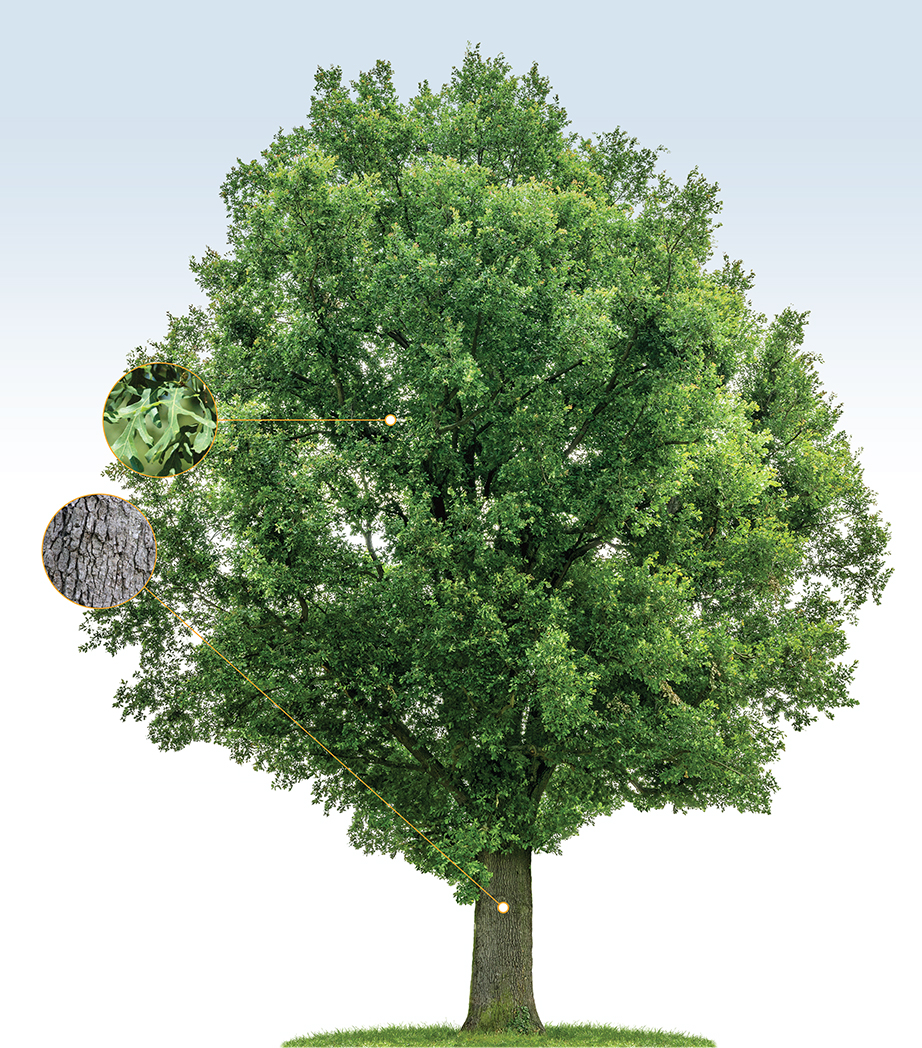Meet the White Ash
White Ash is a pioneer species that thrives following natural and man-made…

The White Oak and its dense, heavy wood have long had ties to United States and New England history, particularly maritime history. Sturdy White Oak wood provided the hull planking and knees for the USS Constitution, the United States’ oldest commissioned warship. This wood is so critical to the ship’s maintenance that the U.S. Navy has set aside “Constitution Grove” on a 64,000-acre naval base in Indiana specifically to provide oak timbers for future work on the USS Constitution.
Some readers may also be familiar with the Charter Oak, a large White Oak that once grew in Hartford, Connecticut rumored to be the hiding location for the Connecticut Charter of 1662, a formal document from King Charles II recognizing Connecticut as a colony.
White Oak acorns were an important food source for many American Indian tribes of the Atlantic seaboard. People would soak acorns in a running stream or boil them to remove the tannins, which cause a bitter flavor. They would then shell and pound the acorns into a coarse meal or grind them into flour, which was used in a variety of porridges, soups, and stews.
NEFF’s new Central and Transition Hardwoods Exemplary Forestry standards account for four main forest types in central and southern New England: Oak-Hickory, White Pine, Oak-Pine and Hemlock. This means the White Oak will be a central player in meeting these new standard’s climate and wildlife goals.
The White Oak ranges from the Canadian border to the Gulf coast, and from the Atlantic to west of the Mississippi. It is also found north of the Great Lakes and up the St. Lawrence River valley in Canada. In New England, it is most common from central Maine down through southern and eastern New Hampshire and across Massachusetts, Rhode Island, and Connecticut. It additionally reaches north into New Hampshire and Vermont in the Connecticut River Valley and the Champlain Valley.

The White Oak tree shown here is an accurate depiction of trees that don’t grow in forest conditions. A forest-grown White Oak would have a trunk nearly two times as tall as the trunk shown here, and would have 10-20 percent less leaves and branches in the lower crown, or the lower portion of the leafy area. Leaf photo by James St. John/CC BY 2.0, bark photo by Derek Ramsey/CC BY-SA 2.5.
White Oak is a long-lived species that can reach more than 600 years in age. It grows to around 80-100 feet tall with a diameter ranging from 2-4 feet, although it can grow larger under the right circumstances, especially in the Ohio River Valley where soils and growing conditions are optimal for White Oak. It typically grows slower than other common oaks in New England, including Northern Red Oak, Black Oak, and Scarlet Oak.
White Oak is a deciduous tree with oval shaped leaves, each with seven to ten rounded, finger-shaped lobes. The depths of the sinuses between the lobes can vary. Some leaves growing at the top of the tree or in full sun might have deeper lobes while those growing lower on the tree and in more shade can have shallower lobes. The bark of White Oak is a light gray color that is tight when young but forms loose strips or blocks as the tree ages.
White Oak acorns are well known to be the most palatable acorns in the forest due to lower tannin levels, and they are consumed by more than 180 species of wildlife, from Wood Ducks on up to American Black Bears. Bumper crops of acorns occur periodically every four to 10 years. Leaves, twigs, and seedlings are also commonly browsed by White-tailed Deer, various rabbits, North American Porcupine, and North American Beaver. Blue Jays, squirrels, and the extinct Passenger Pigeon are or were all well known to disperse and bury acorns, which aided in regeneration.
White Oak is host to hundreds of native insects that makes it valuable to a wide range of bird species that feed on those insects. In the spring, you might catch breeding warblers or tanagers feeding on the caterpillars of numerous moths and butterflies that reproduce and feed on White Oak branches and leaves.
White Oak grows in a variety of site conditions from moist bottomlands to sandy, gravelly uplands. It is generally not limited by poor soil nutrients and can therefore outcompete other species on degraded sites, making it a candidate for reclaiming old mines and gravel pits.
White Oak is generally managed through even-aged techniques due to its low-to-moderate shade tolerance, meaning young White Oaks wouldn’t get enough light to grow if surrounded by a range of taller trees in an uneven-aged stand. Regenerating—or regrowing trees after a harvest or natural disturbance—from seed is a challenge due to unpredictable acorn crops and damage or consumption of those acorns by insects, birds, and mammals. NEFF prefers to use a number of preparation harvests to establish enough seedlings before finally releasing that regeneration, i.e., removing more of the overstory to give those established seedlings additional light and resources. White Oak also regenerates from stump or root sprouts following a harvest or fire. The exclusion of fire throughout much of its range is thought to be a major challenge in adequately regenerating our White Oak forests.
Want to see White Oaks on NEFF forestlands? Head to our Mixter Nields Memorial Forest in Hardwick, MA, or our Niantic River Headwaters Community Forest in East Lyme, CT. Our forest maps can help you find your way.
White Oak lumber has long been used in a variety of ways, including furniture, flooring, and cabinetry, but perhaps most uniquely in cooperage, or the making of barrels and casks. It is currently the major source of wood for barrels used to age alcohol due to the woods’ unique characteristics and the flavor it imparts to the fermenting wine and whiskey.